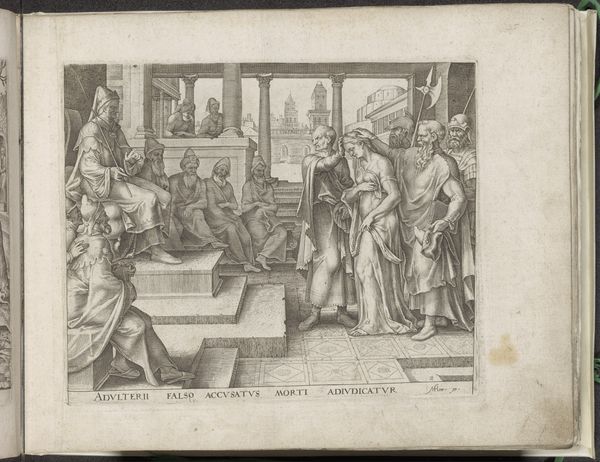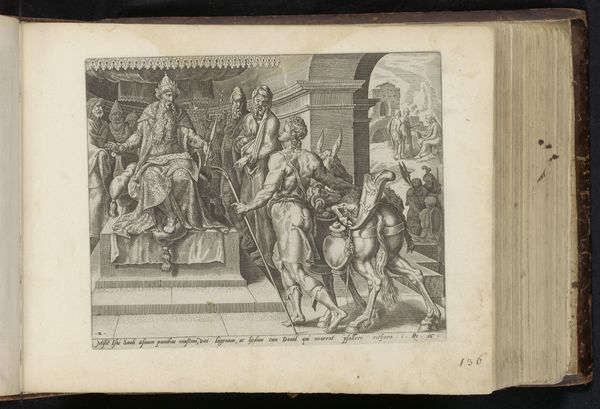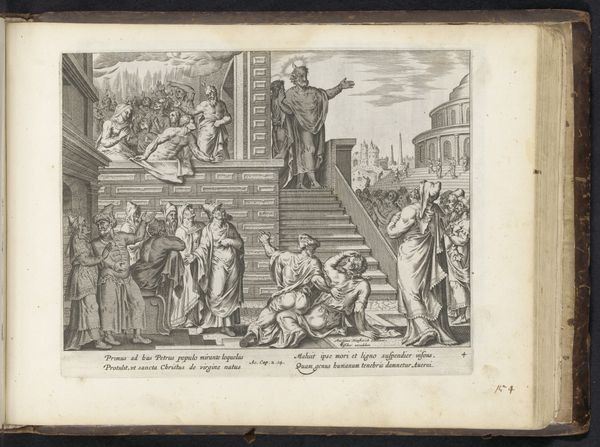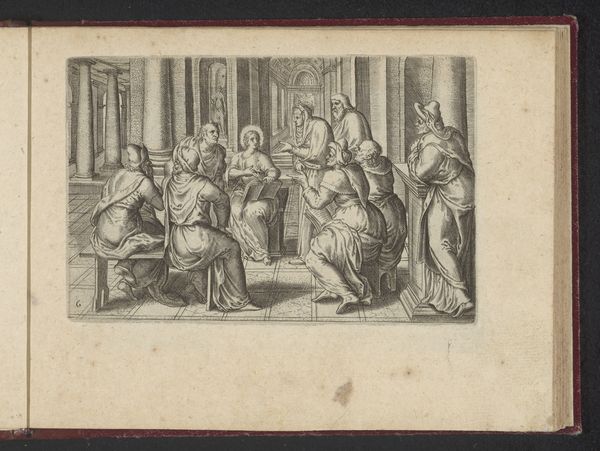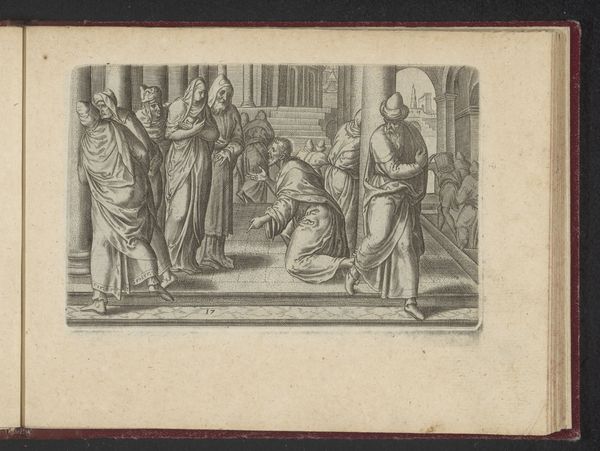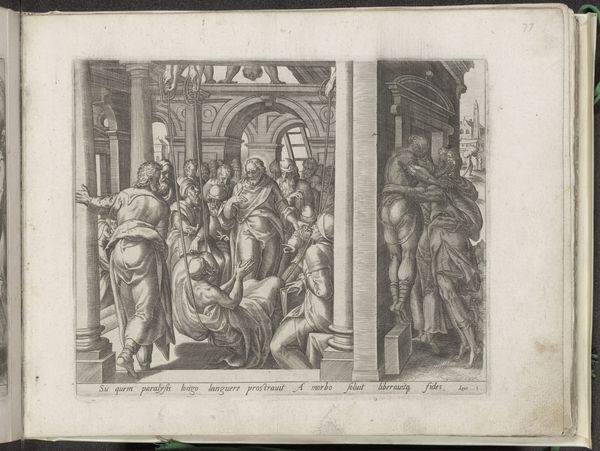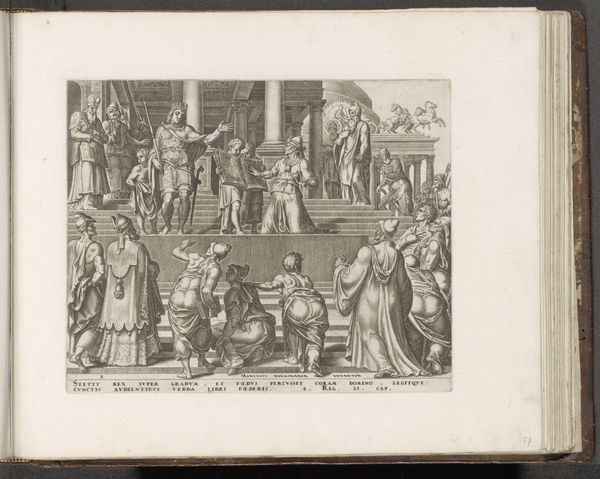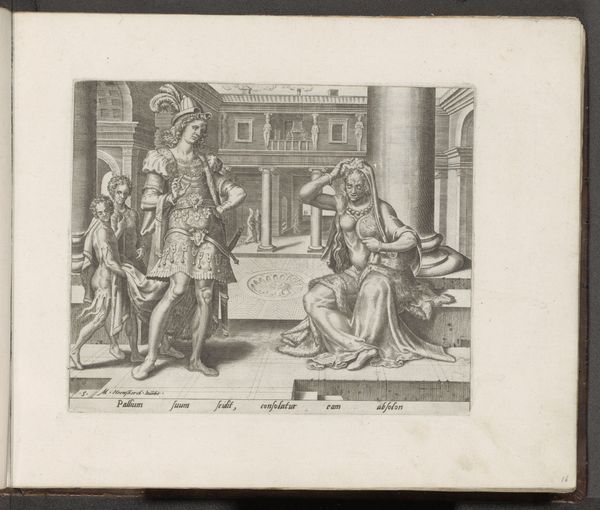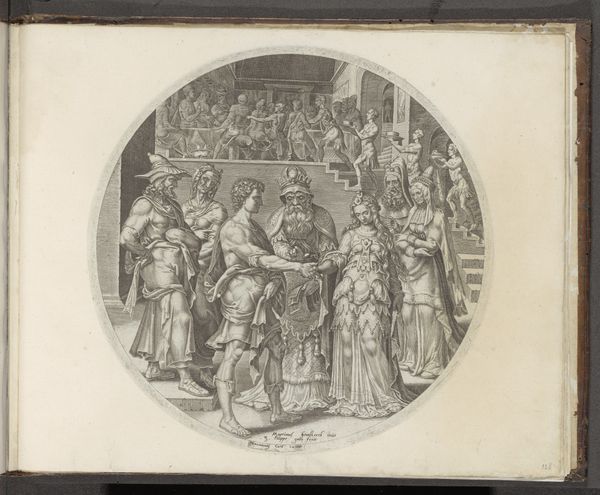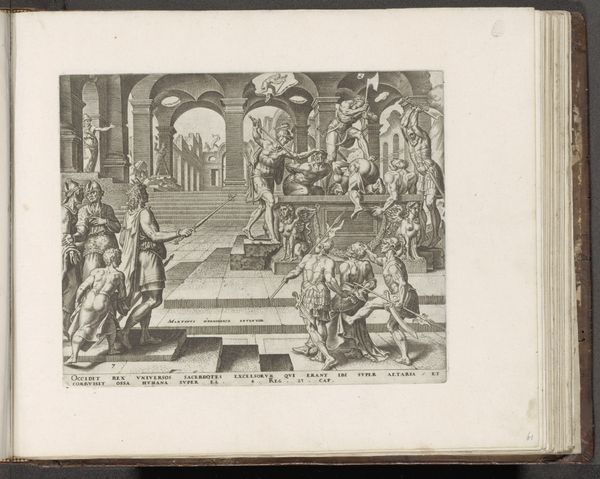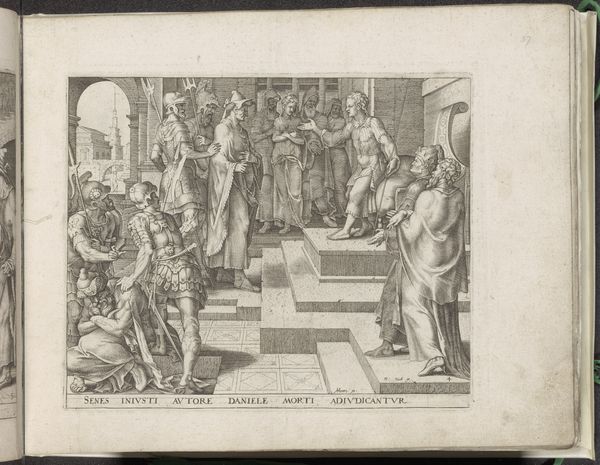
print, engraving
# print
#
figuration
#
line
#
history-painting
#
northern-renaissance
#
engraving
Dimensions: height 199 mm, width 262 mm
Copyright: Rijks Museum: Open Domain
Curator: Here we have Philips Galle's engraving, "Gabriël verschijnt aan Zacharias," created in 1564. Editor: My first thought is how densely packed it is! So much is happening. And it's fascinating how the crisp, graphic lines lend a kind of cool precision to such a momentous, and frankly, chaotic scene. Curator: Precisely. The figures' gestures, although meticulously rendered, possess an archaic quality that connects us to the Northern Renaissance and its specific rendering of biblical narratives. Note Gabriel's posture, simultaneously imposing yet graceful as he appears to Zacharias, signaling profound news. It evokes the power of divine interruption. Editor: The materials also fascinate me here—this isn’t a fresco or painting loaded with expensive pigments. It's an engraving, accessible by design, meant for wider distribution. Look at how the linear quality dictates form, relying solely on skilled incisions to create depth and drama. That conscious decision impacts how the narrative reaches the populace, doesn't it? Curator: Absolutely. Galle’s masterful handling of line evokes not only the scene itself but a collective memory—images circulating and reinforcing the established cultural narratives of the time. See the temple setting behind Zacharias, a known architectural archetype. Galle, I feel, utilizes that pre-established form in this specific space and moment. Editor: Yes! The dissemination aspect of this work as printmaking, it is so crucial. How many homes, how many private devotional spaces saw this image? What effect did that multiplication have on religious practice itself? I feel, by understanding how it was created, the cultural meaning intensifies. Curator: That interplay between access and iconographic presence— it amplifies the emotional gravity for those receiving it. It connects them with history. Editor: It’s an early form of mass media in some respects. Examining the physicality and process sheds light on the intersection of faith, access, and artistic labor during that time. It highlights how faith touches daily life. Curator: So very true, a fascinating testament to an important story represented through the printmaker's means. Editor: Agreed, indeed, and I believe my insight into process helps ground it for me personally. Thank you for sharing!
Comments
No comments
Be the first to comment and join the conversation on the ultimate creative platform.
